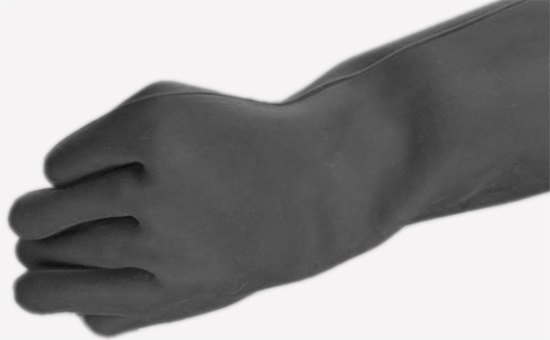
Reclaimed rubber can replace suitable varieties of raw rubber to produce wire and cable sheaths, insulating gloves, insulating rubber pads and other products, reducing the cost of rubber products. In actual production, the electrical insulation of electrical insulation reclaimed rubber products is directly related to the type and amount of compounding agents in the rubber formulation. In addition to the vulcanization system and filler system, the softening system and protective system of reclaimed rubber products will also affect the electrical insulation of the product. So which compounding agents are beneficial to the insulation of reclaimed rubber?
3. Soften the system
When using reclaimed rubber to produce electrical insulating rubber products, paraffin oil, high aromatic oil, naphthenic oil, coumarone resin, etc. are common compounding agents in the softening system. When using reclaimed rubber to produce 2LLYY1229 low-voltage insulation products, 5-10 parts of paraffin oil can be added; when the electrical insulation products need to be glued, the paraffin oil and coumarone resin can be used together to improve the self-adhesion of the rubber. High-voltage insulation products can use high aromatic oil or naphthenic oil.
It should be noted that when reclaimed rubber insulation products have certain requirements for the heat resistance of the rubber compound, low-viscosity polybutene oligomers and polyester plasticizers with relatively large molecular weights should be used. Among them, polyester compounds will be hydrolyzed to generate low molecular polar compounds during direct steam vulcanization, thereby reducing the electrical insulation of the rubber compound.
4. Anti-aging system
When reclaimed rubber is used to produce high-voltage electrical insulation rubber products, amine antioxidants and p-phenylenediamine antioxidants are generally used, and an appropriate amount of antiozonant is added to effectively improve the aging resistance of electrical insulation products. In actual production, anti-aging agent H and anti-aging agent AW are more commonly used. If necessary, microcrystalline paraffin can be added to improve the protective effect. Amine antioxidants affect peroxide vulcanization, so peroxide vulcanized reclaimed rubber should avoid using amine antioxidants.
When choosing an anti-aging system compounding agent for reclaimed rubber insulation products, we must pay attention to the purity and water absorption of the anti-aging agent.
Theoretically, the smaller the amount of processing aids used in the production of reclaimed rubber, the better the dielectric properties of the rubber; the full and uniform dispersion of the compounding agent in the reclaimed rubber can improve the electrical insulation and tracking resistance of the rubber. When using reclaimed rubber to produce electrical insulation products, the amount of various compounding agents should be minimized on the premise of meeting the processing performance of the rubber. In actual production, if you want to further improve the heat resistance and electrical stability of reclaimed rubber electrical insulation products, you can add 5-8 parts of red lead and a certain amount of low-density polyethylene to the formula.
Exclusive original article [commercial authorization] reprint, excerpt and excerpt in any form are prohibited without written authorization. Focus on Hongyun rubber: learn the process formula and raw material technology of producing rubber products from recycled rubber to help you reduce costs and increase profits